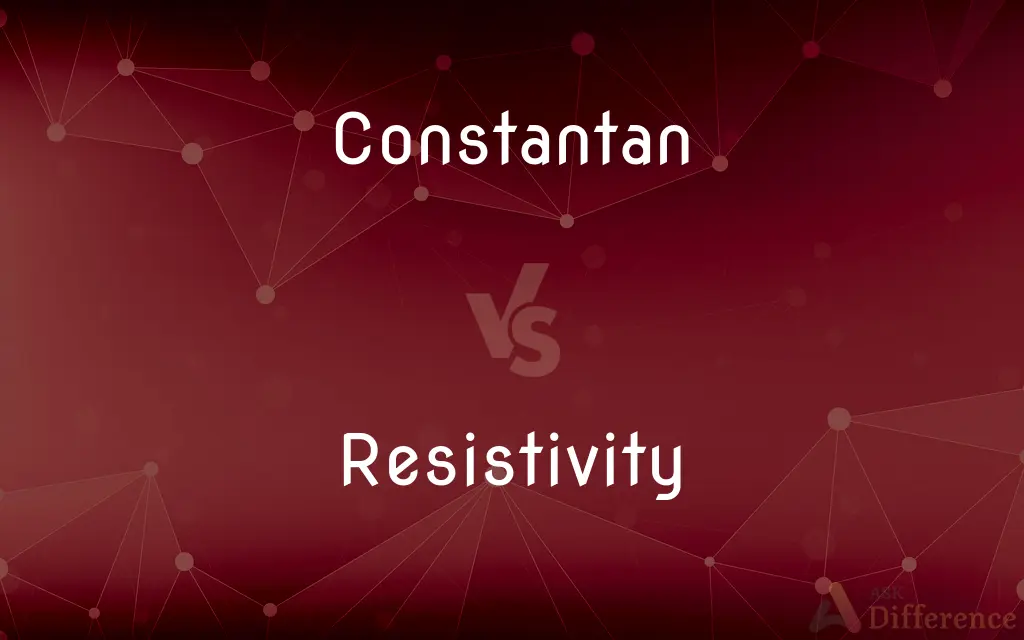Constantan vs. Resistivity — What's the Difference?

Difference Between Constantan and Resistivity
ADVERTISEMENT
Compare with Definitions
Constantan
Constantan is a proprietary name for a copper–nickel alloy also known as Eureka, Advance, and Ferry. It usually consists of 55% copper and 45% nickel.
Resistivity
The capacity for or tendency toward resistance.
Constantan
An alloy of 45 percent nickel and 55 percent copper, used chiefly in electrical instruments because of its constant resistance under variations of temperature.
Resistivity
(Electricity) An intrinsic property of a material that is measured as its resistance to current per unit length for a uniform cross section.
Constantan
An alloy of copper and nickel whose resistivity is constant over a wide temperature range.
ADVERTISEMENT
Resistivity
(electricity) The resistance offered at a particular temperature by an electrical conductor of any given material in a cube of unit length, expressed in ohm-metres (Ωm) in the metric system of measurement.
Constantan
A copper-nickel alloy composed of approximately 55 per cent copper and 45 per cent nickel, with high electrical resistance and a low temperature coefficient; it is used as resistance wire and in thermocouples.
Resistivity
(thermodynamics) The reciprocal of thermal conductivity, having SI unit: m K W-1
Constantan
A copper-nickel alloy with high electrical resistance and a low temperature coefficient; used as resistance wire
Resistivity
A material's opposition to the flow of electric current; measured in ohms
Share Your Discovery

Previous Comparison
Trill vs. Gruppetto
Next Comparison
Frame vs. Keyframe














































